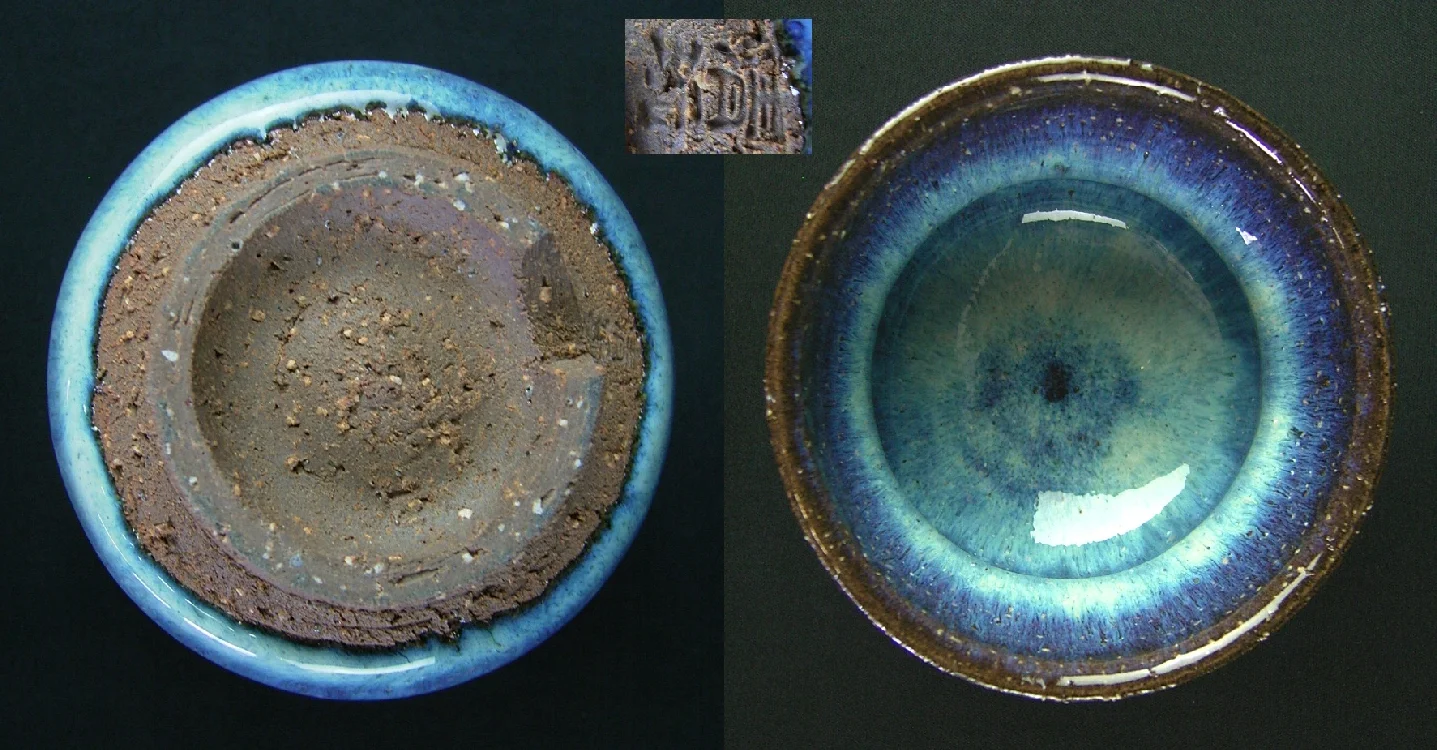Japanese tea ware
Over the years I collected quite a few Japanese tea wares. My Hagi-yaki I bought around 2004 on eBay. Since 2017 I have been completing my collection with additional ceramics and pottery. Images are mostly taken from the online shops I bought my tea ware.
Banko-yaki 萬古焼 kyusu with basket motifs by Tachi Masaki, 140 ml (2017)
Banko-yaki is a type of Japanese pottery traditionally from Yokkaichi, Mie Prefecture and is thought to have originated in the 18th century. Initially white or yellow clay was used until the mines were depleted. They changed to a local clay which is known as purple clay (紫泥). I bought this small 140 ml kyusu for premium sencha. Masaki used a chigire 千切れ pattern on the surface of the tea pot.
Kazuho Chasen by Tango Tanimura (2018)
Tango Tanimura is the 20th generation of a chasen making family in Japan. This 80 prong chasen is crafted from a single piece of white Hachiku bamboo that has been seasoned for 2-3 years. Designed for the Urasenke style of Tea Ceremony and suited for Usucha (thin tea).
Wari-Koudai Totoya Chawan by Deishi Shibuya (歴史)
The only chawan I currently own is made by Deishi Shibuya who passed away in 2017. The motif of Deishi's work was an old huge cherry tree Usuzumi Sakura in Gifu Prefecture. The bright white glaze symbolises the cherry blossoms, the rough clay the bark of the tree. Shibuya used straw-ashes glaze for most of his work, which he studied for 30 years. The clay with blended rough sand is called Oni-Hagi.
Yunomi by Deishi Shibuya (歴史)
Yunomi by Seigan Yamane
Most of my Hagi-yaki yunomi are made by Seigan Yamane. They hold between 200 ml and 250 ml to the rim and are the best size for daily tea. After a 15 year career in Karate (Yamane established a Karate school in 1974) he decided to pursue a life in pottery in 1987. In ceramic art the same principle holds: in vacuum alone motion becomes possible. Yamane: "Making pottery is a means to be vacuum rather than a way to express myself." This concept is taken from The Heart Sūtra. The sutra famously states, "Form is empty" (śūnyatā).
Yuzamashi (water cooler)
Mogake is a technique consisting of applying seaweed on unglazed clay before firing. The salt from seaweed oxidizes with the clay during the firing and unique marks are made on the surfaces. Handmade by Hokujo, recognized as a Tokoname City Human Cultural Asset. Since I have an electric water cooker with temperature presets I don’t really need a water cooler anymore.
Mizutama (polka dot) Dobin, 550 ml (2018)
Factory made ceramics but still pretty nice. The filter is also made of ceramics and therefore easy to clean. This size is too big for me, but for brewing cold green tea in the refrigerator in summer this dobin has the perfect size.
Takasuke Shudei Kyusu Tokoname, Japan, 280 ml (2018)
One also needs a less expensive teapot for daily use. Perfect for lower priced sencha and a perfect match for my larger 200 ml yunomi. Although it is less expensive this kyusu is still a very nice piece of Tokoname-yaki.
Tiger and Rooster tea caddy in style of Rinpa (琳派) school
Paper on aluminium.
























